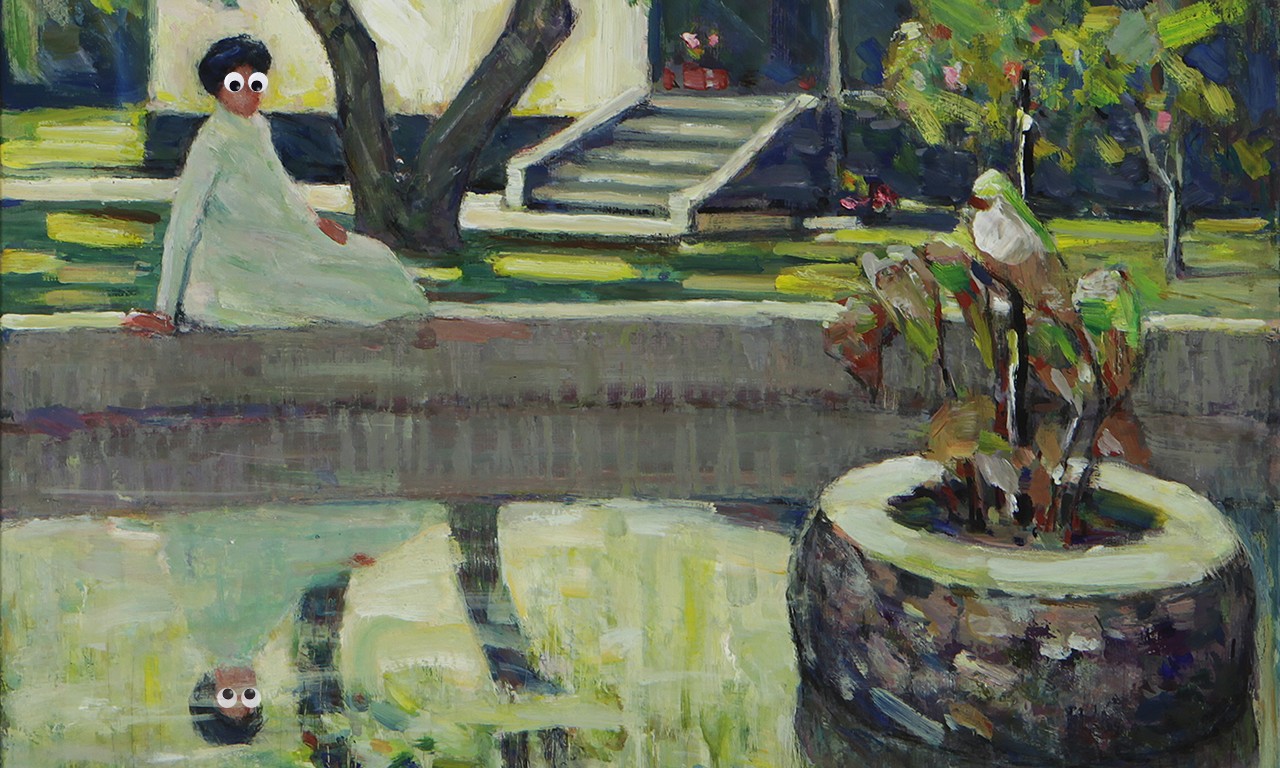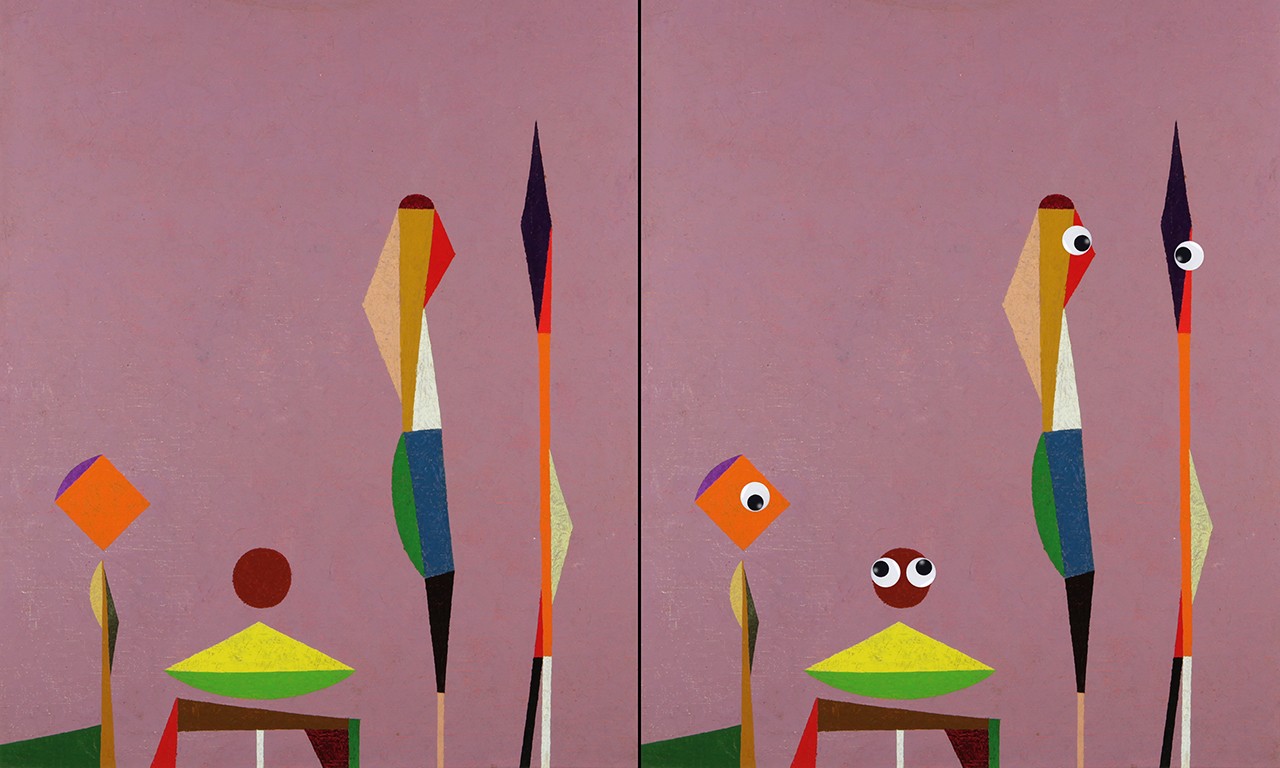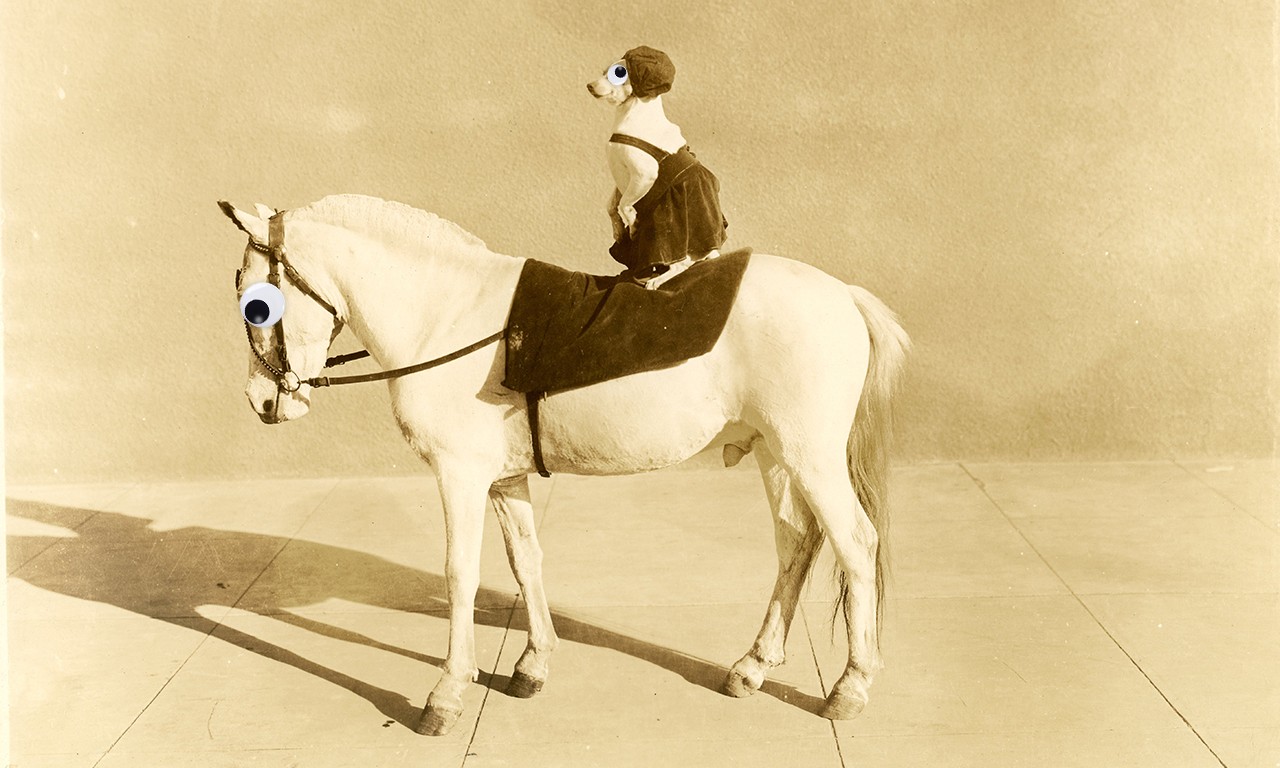2002 North Main Street
Santa Ana, California 92706
TEL: 714.567.3600
Beauty in the Eye of the Beheld
 |
| Madame Modjeska in her Forest of Arden with EyinHance™ filter applied, 1916 Frank Coburn (American, 1862-1938) Oil on wood panel; 20 3/4 x 25 3/4 in. 3821 Gift of Frank Coburn |
Emperor’s New Eyes
Every artist to have ever painted a portrait knows that if they fail to capture the sitter’s eyes, that they have failed in their task to capture the essence of their subject. While the Bowers Museum boasts a great collection of portraits, the advent of ultra-high-resolution technology this past decade has left 19th and mid 20th century artists’ depictions of eyes feeling somewhat lackluster. In an effort to reignite the spark in the eyes of every painting at the museum, we at the Bowers could not be more excited to announce a new partnership with Asinus Inc. to bring EyinHance™ to our virtual platforms. This post stares unblinkingly at the history of the technology and its application in several types of painting in the Bowers’ collections.
| Fight at O.K. Corral, 1952 Clyde Forsythe (American, 1885-1962) Oil on canvas; 26 x 46 in. F39478 Gift of Mr. & Mrs. Douglas W. Horton |
History of Asinus
Just before the pandemic Asinus, a tech startup based out of Silicon Valley, developed an algorithm which was originally intended to be pushed to major social media platforms. Though it already had several applications at the time of development, it was primarily intended to enhance the appearance of a user’s eyes in selfies. Meeting fierce competition from other companies, Asinus changed their marketing strategy and began transitioning away from social media platforms. The onset of COVID and the closure of museums meant that cultural and fine art institutions were sharing more images of their artwork than ever on their websites and social media platforms. Seeing an opportunity, the algorithm was retooled for paintings. After almost a year, EyinHance™ is out of beta and Bowers staff is already working to apply this irreversible filter to our collections’ digital media.
| La Buenaventura, 1927 Charles Percy Austin (American, 1883 - 1948) Oil on canvas; 35 1/2 × 35 1/2 in. 32195a Gift of Mr. Ralph J. Steven |
Stunning Impression
The results of the process speak for themselves. Where once artists battled to capture the window to the soul, this nuclear option seamlessly integrates a uniform solution into any style of painting. Taking the example of the above portrait by Charles Percy Austin, we see a woman painted in an impressionistic style which leave the eyes shrouded, as if it were the goal of the artist to conceal the intentions of his subject. But such nuance is dated in the contemporary context. This is where EyinHance™ comes in. It can take a beloved albeit dated painting and help viewers discern details which were difficult to detect even under the best conditions. Charles Percy Austin’s La Buenaventura is transformed into a democratic and accessible piece with clear sightlines indicating exactly what it is that the sitter is looking at. This painting also demonstrates that the advanced detection algorithm can work with eyes which are partially obscured by hair. Clyde Forsythe’s Fight at O.K. Corral changes from a chaotic brawl to choreographed dance, illustrating that the technology works just as well when several figures are present.
 |
| Four with and without EyinHance™ filter applied, c. 1954 Frederick Hammersley (American, 1919-2009) Oil on canvas; 30 x 24 in. F78.50.1 Gift of Dr. Russell W. Ludwick, Jr. |
Hardly Reductionist
Impressionism is hardly the worst of it when it comes to non-photorealistic depictions of individuals. While Coburn’s original painting of Madame Modjeska may capture the Polish thespian’s visage sans eyeball, Modjeska might as well have a big sign saying “here are my eyes” when compared against Frederick Hammersley’s 1954 painting, Four. Best known for his abstract paintings and working in the hard edge style, if one were waiting to see the whites of the eyes in a Hammersley painting, they would never shoot. This presents a unique problem when it comes to assigning figural values to what otherwise might be confused for two coat racks, a heaping bowl of chips, and the back of a road work sign at a distance. EyinHance™ boldly removes the guesswork from the equation. Able to interpret even the polygonal reduction of a person, the algorithm places eyes where artists may have intended to. Just think of what could be done to de-minimalize the works of an artist like Keith Herring.
 |
| Dog Posed on a White Horse with EyinHance™ filter applied, early 20th Century Leo Tiede (American 1889-1968); Santa Ana Photographic print; 8 x 10 in. 37057.1196.1 Leo Tiede Photography Collection |
Foresight
Though the current version of Asinus’ technology is not intended for use with anything but paintings, we have tested the software on several photographic prints in our collection as well for satisfying results. This print of a dog riding alone on the back of a horse takes on a somber tone when we can see what the eyes of the two animals express about their relationship. Asinus has already promised better support for this feature going forward and has announced EyinHance™ Move, which will animate their enhancement technology. More than ever before visitors will be able to feel comfortable in an institution where at least digitally, the walls have eyes. Or at least they would if this were not an April fool!
Text and images may be under copyright. Please contact Collection Department for permission to use. References are available on request. Information subject to change upon further research.

Comments 2
Is this a joke? Why in the world would you deface paintings with white circles around eyes?
Another masterful Bowers Blog! These blogs are so well written and researched with detail that for this April Fool spoof I was hooked line and sinker into thinking it was real. What a surprise and laugh I enjoyed with this creative joke.